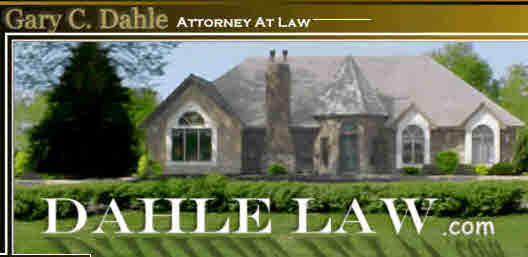“HOW THE FUR WILL FLY”
A STUDY OF AUGSBURG PROFESSOR SVEN OFTEDAL’S RESPONSE TO NORWEGIAN-AMERICAN LEADER RASMUS B. ANDERSON
By JAMES L. JOHNSON
2014
Reprinted by permission from the author.
Section One – Introduction
The awkward conversation grew heated in the parlor of a two-story Madison home on Washington Avenue, four blocks southwest of the state capitol building, between Lake Mendota and Lake Menona in the growing city.
Rasmus Anderson and Sven Oftedal stared at each other across the room.
It was a summer night in 1875, and Anderson, the twenty-nine-year-old University of Wisconsin professor, had come home late for supper.
There, to his “utter surprise,” was Oftedal, his despised rival and former friend, ready to enjoy an evening meal. (1)
He was sitting with the Anderson family, his pastor, Melchior Falk Gjertsen, and two houseguests from Iceland, Jon and Laura Bjarnason. “There was a vacant chair for me,” said Anderson. (2)
He thought he had made it clear. The friendship was over.
But Anderson, a well-known translator of Nordic mythology and a professor of Scandinavian Language and Literature, decided to sit down to eat anyway.
His wife, Bertha Karina, was an especially good cook, and it would have been awkward to turn a heel with his pastor there and the Bjarnasons present, so he relented: “I took supper with them,” said Anderson. (3)
It was only a year and a half previous the two professors had their falling out.
The clash was over “The Open Declaration,” which Anderson referred to as “the notorious ‘Aapen erklaering.’” (4)
The newspaper essay quickly earned Sven Oftedal a reputation as a primary critic of the Norwegian Synod and the lead spokesman for its rival, the more pietistic Norwegian-Danish Conference.
In the essay, Oftedal and Augsburg colleague August Weenaas skewered the Synod for its “papistic” hierarchy, its “rationalistic” penchant for quoting the Lutheran confessions more authoritatively than the Scriptures, and its “anti-Christian tendency” to recoil from the emphases of Haugean revivals in Norway. (5)
“They posed as great progressives,” commented Anderson, sardonically. (6)
After the meal, Gjertsen and Bjarnason took the hint and stepped out for a walk, expecting the rivals might want to have a “twa-handed chat.”
Oftedal settled into a large rocking chair in the parlor, and Anderson nestled into a chair opposite, waiting for the outgoing Oftedal to start.
“I was fully expecting an apology,” remembered Anderson.
Instead, Oftedal chatted away amiably.
He asked Anderson if he knew what the internationally recognized Norwegian novelist, Bjørnstjerne Bjørnson, was writing.
He inquired if Anderson knew where world famous violinist Ole Bull was staying for the summer.
Anderson fumed.
“I replied that I did hear from Bjørnson occasionally, but that he did not reveal to me his literary plans,” Anderson said.
“I told him I did not know where Ole Bull was just at that moment.”
The cool-nerved scholar from Augsburg was not playing into his hand, Anderson said, so “I asked him whether there was not something else he and I out to talk about.”
Oftedal “shrugged his shoulders in a manner peculiar to him,” as if to say, “Nothing so far as he knew.” (7)
It was more than the Scandinavian professor could stand.
With that, the smallish professor made his decision.
He bolted out of his chair, reached for Oftedal’s arm, and gripped it with all the Viking strength he could muster.
Anderson, who was only five-foot-nine, was a much smaller man than Oftedal. (8)
But “I took hold of him vigorously” and wrestled Oftedal down the hallway.
He “led him to the front door and pushed him out.”
Then Anderson remembered the hat.
Oh, yes.
So in a final act of triumph, the professor stormed back in his house, snatched Oftedal’s chapeau, hurried out to the sidewalk and “handed it to him at the gate.”
With that, Anderson told the Augsburg professor “never to set foot on my premises again.”
There was one more detail to complete.
Anderson met his pastor, Gjertsen, the next day to ask for his support against Oftedal, but Gertsen
“had gone daft on Oftedal…In his mind, Oftedal could do no wrong. He vigorously defended Oftedal and blamed me.”
So, “I left his congregation,” said Anderson, and became “a religious tramp.” (9)
NOTES
- Rasmus B. Anderson, with the assistance of Albert O. Barton. Life Story of Rasmus B. Anderson (Madison, Wisconsin: 1915), 170.
- Ibid.
- Ibid.
- Ibid., 167.
- James S. Hamre, Georg Sverdrup: Educator, Theologian, Churchman (Northfield, Minnesota: The Norwegian-American Historical Association, 1986), 61.
- Anderson, 168.
- Ibid., 170.
- Lloyd Hustvedt, “Rasmus Bjorn Anderson—Pioneer Scholar, Authors Series, Volume 2,” http://archiver.rootsweb.ancestry.com/th/read/NORWAY/2004-07/1089570034 (accessed May 3, 2014).
- Anderson, 171.
